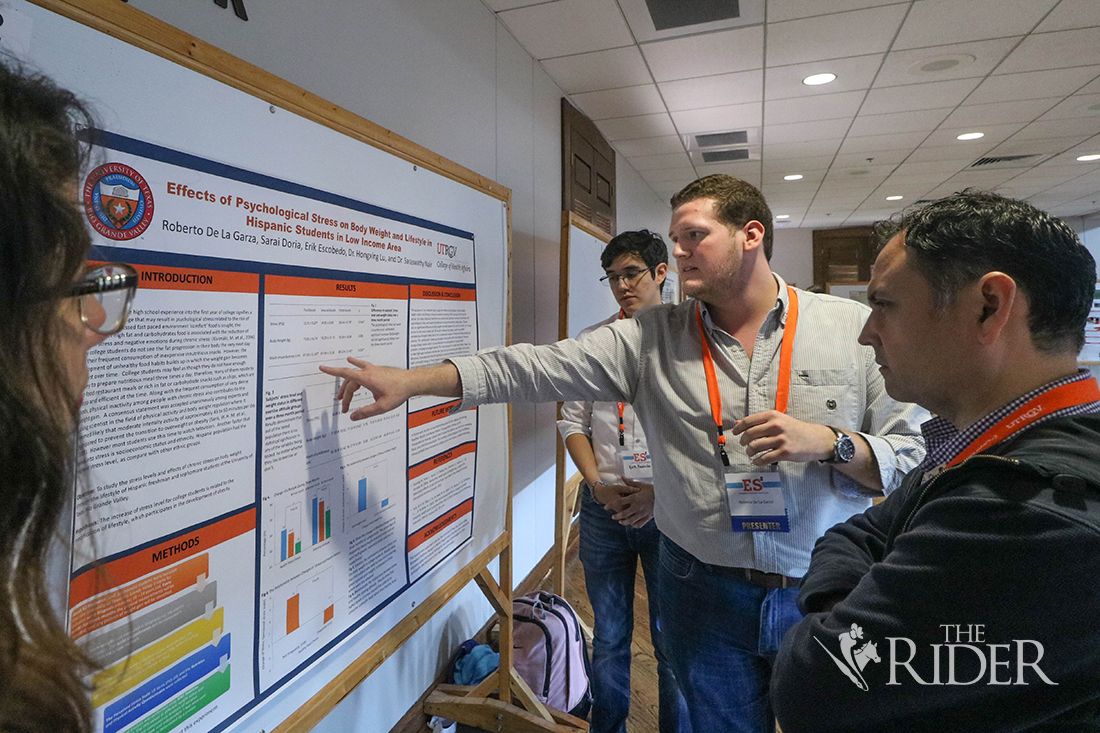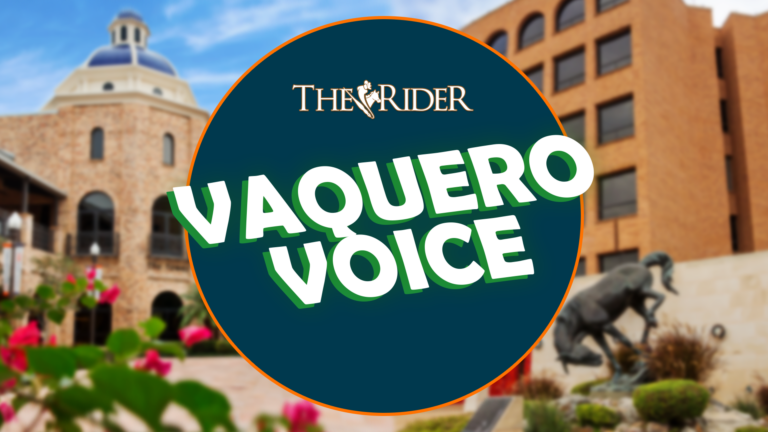
More than 800 UTRGV students participated in the three-day Engaged Scholar Symposium with presentations and displays in areas ranging from art and medicine to engineering.
The symposium began last Tuesday on the Brownsville campus. It continued Wednesday on the Edinburg campus and concluded Thursday in Harlingen.
Keynote Speaker Melissa Reynolds, who is the associate dean for research in the College of Natural Sciences and an associate professor in chemistry and biomedical engineering at Colorado State University, spoke about the importance of internal medical devices.
The symposium, which has been taking place every April since UTRGV’s establishment in 2015, gives graduate and undergraduate students the opportunity to showcase research of their choosing.
Pierre Lu, an assistant professor in Teaching and Learning, said he describes the Engaged Scholar Symposium as “the largest multidisciplinary undergraduate research and creative works in all of South Texas.”
“There are a lot of participants and oral, poster presentations,” Lu said. “For the oral and poster sessions, they also are selected in their competition to get awards.”
After the reviewing process, students are notified on the decision for them to proceed on their research.
“They will either get accepted or rejected, but we try not to reject students’ work unless we totally don’t know what it is,” he said.
Presentations can be done either in oral or poster form. The presentations are then scored by a group of judges who are either graduate students or professors.
To view a list of winners of this year’s symposium, click here.
Awards were presented at the UTRGV Harlingen campus.
Lu said besides the awards and recognition, students will leave the symposium with vital skills that will help them in life after college.
“In terms of the high-impact practices, we embrace them and try to implement them and many of them help our undergraduate students to be successful,” he said. “Student success is not just, ‘Oh, I passed a course.’ That’s good, but better is that they get to learn a lot and utilize the knowledge they have gained to the real world and not only that, but graduation and beyond.”
Michael Toney, a chemistry senior, presented a science research project studying carbon nanofibers, which combined chemistry and engineering.
“Carbon nanofibers are everywhere,” Toney said. “You see them in tennis rackets, laptops, that sort of thing.”
Toney’s project looked to find a cheaper way of making nanofibers by using additives.
“We did quite a bit in a short time thanks to [Engaged Scholar’s] funding,” he said.
Perla Leyva, a biomedical science senior, worked on making a product to replace skin grafting using glutaraldehyde-chitosan hydrogels.
“This is a cheap way to help people with third-degree burns, or a major injury,”Leyva said.
Alexis Delgado, a chemistry senior, presented a project studying quantum chemical calculations using computer programs.
“This is all computer based. This is all coding,” Delgado said. “It was difficult because … if you don’t code it right, it fails.”
Art presentations were also on display inside the Charles and Dorothy Clark ELABS Gallery. Studio art senior Andres Alejandro Aceves made a political 24-by-15-by-15-inch art piece made of ceramic called “Mad Kim.”
“I wanted to do a [sculpture] about North Korea and how Kim Jong Un is a threat,” Aceves said. “But, I put it in small scale because it is a big threat but no one takes it seriously.”
For more information and the competition’s results, visit the UTRGV Engaged Scholars website at utrgv.edu/es2.









